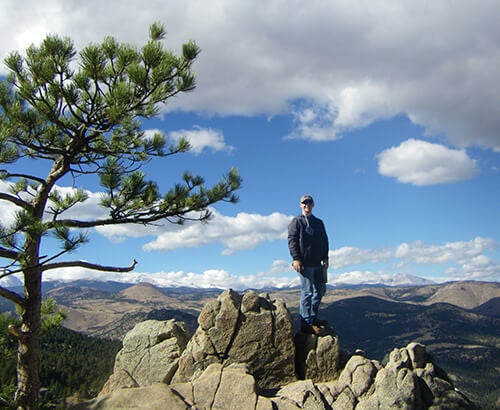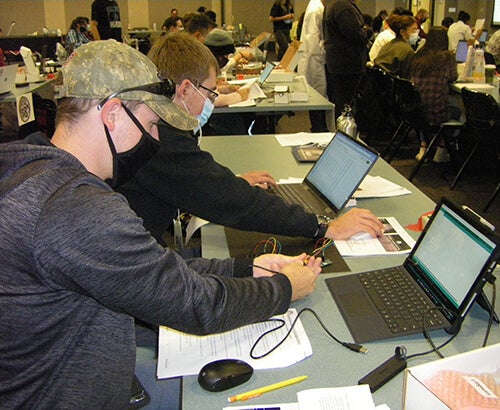The GLEE mission aims to deploy 500 LunaSats to the lunar surface of the moon to conduct local and distributed science missions. LunaSats are spacecraft, small enough to fit in one’s hand, that have an array of sensors onboard. The Marshall students who participated in the beta version of the hands-on GLEE workshop have secured their spot for an anticipated December 2023 lunar landing and will be LunaSat assistants for the Spring 2022 virtual workshop.
“This project is an overall fantastic opportunity for our Marshall SPS students, and others from across campus, to get involved in a beyond Earth-based science mission that has collaborations that span globally,” said McBride, the faculty team lead and faculty mentor for the students from Marshall. “Without the help from the NASA West Virginia Space Grant Consortium (WVSGC) and the MU staff across campus in various offices working together as a team, this trip would not have been possible. From the time of acceptance to the start of the workshop was less than 35 days, so things had to happen quickly.”
It was an excellent experience, both for the educational benefits as well as the opportunity to explore the mountains of Boulder after the workshop came to a close, Burbery said. Messinger added that meeting others from all over the country who share a love for science was among the best aspects of the experience.
“I had an amazing experience with GLEE and want to thank Dr. McBride, the physics department, and the Society of Physics Students at Marshall University for giving me the opportunity to represent not only our department, but our university,” Messinger said. “I am very fortunate to have been a part of this team and I am excited to see the opportunities that will come from GLEE, not only for the students at Marshall now, but for the future students that will someday hopefully be a part of the physics department here at Marshall University.”
The GLEE program is an amazing hands-on opportunity for our students and is paving the way for future astronauts and those in space exploration, while inspiring the youth, McBride said.
“We hope that other STEM-focused groups across the Tri-State area get interested and consider becoming involved,” McBride said.
Any high school STEM groups or college clubs that want to get involved in GLEE can apply to the next virtual workshop at www.glee2023.org/contact for more information.
 The Great Lunar Expedition for Everyone (GLEE) was initiated in 2018 by the Colorado and New York Space Grant Consortia. This mission is led by the Colorado Space Grant Consortium at the University of Colorado, Boulder and currently supported by NASA’s Artemis Student Challenges. The West Virginia Space Grant Consortium (WVSGC) selected Marshall’s SPS to represent the state in this opportunity and supported all travel cost for the SPS team while at the workshop in Boulder.
The Great Lunar Expedition for Everyone (GLEE) was initiated in 2018 by the Colorado and New York Space Grant Consortia. This mission is led by the Colorado Space Grant Consortium at the University of Colorado, Boulder and currently supported by NASA’s Artemis Student Challenges. The West Virginia Space Grant Consortium (WVSGC) selected Marshall’s SPS to represent the state in this opportunity and supported all travel cost for the SPS team while at the workshop in Boulder.
Learn more about GLEE at www.glee2023.org. Learn more about the Marshall University Department of Physics at www.marshall.edu/physics and the MU Society of Physics Students at www.marshall.edu/physics/society-physics-students/.
——
Photos: (Above) A.J. Messinger (front) and Peter Burbery (back) on the last day of the GLEE workshop testing out the Radio Frequency (RF) transmission and receiving capabilities of their two LunaSat systems. (Below) Students worked hard and played hard. After the workshop concluded, students hiked around the Lost Gulch Overlook area before catching their flight. Here we see A.J. Messinger standing in what appears to be a precarious position on a rock face at roughly 7600 feet above sea level.

